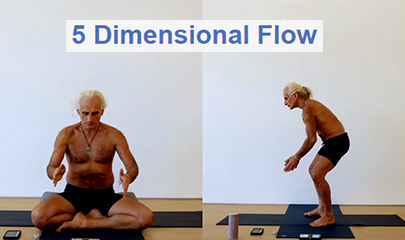Yoga for Beginners 1 By Amy Baker
$6,00
Yoga for beginners: An introduction to the practice by Amy Baker – Digital Download!
Let’s embark on a captivating adventure to uncover remarkable insights that spark your curiosity and elevate your understanding
Yoga for Beginners 1 By Amy Baker
Overview

Beginning yoga: Amy Baker’s introduction to the practice
Starting a yoga journey can often feel like stepping off a precipice, which is both frightening and full of opportunities for development and change. With so many different positions, ideas, and practices, the world of yoga can be intimidating to many beginners. This is where Amy Baker’s “Yoga for Beginners” shines brightly, offering guidance to individuals who are hesitant to get on the mat. Baker’s book is organized to smoothly explain key concepts and practices in an approachable and welcoming manner, all while maintaining a user-friendly style. It stresses awareness and meditation in addition to the physical component of yoga, laying a solid basis for overall wellbeing.
The foundation of yoga: Principles and postures
One of the critical elements in the journey through yoga involves understanding its foundational principles and postures. In “Yoga for Beginners,” Amy Baker presents these concepts clearly, breaking them down into manageable sections. This approach invites readers to explore their bodies and minds gently. The book is organized to illustrate essential postures, each accompanied by vivid illustrations and detailed descriptions. This is not just a guide for practicing yoga; it is an invitation to explore one’s own physical capabilities and limitations.
- Essential Postures in Yoga:
- Mountain Pose (Tadasana): A fundamental standing pose that teaches balance and grounding.
- Downward-Facing Dog (Adho Mukha Svanasana): A versatile pose that stretches the entire body while strengthening the limbs.
- Child’s Pose (Balasana): A resting pose that encourages relaxation and introspection.
These postures are not simply meant to be learned and executed but also understood on a deeper level. Baker emphasizes the importance of correct alignment to prevent injuries a lesson that cannot be overstated for newcomers who may be susceptible to pushing themselves too hard too soon. She introduces modifications for various body types, fostering an inclusive atmosphere where every reader feels acknowledged in their unique yoga journey.
Moreover, Baker’s gentle approach is backed by research that highlights the psychological and physical benefits of practicing yoga as a beginner. A study by the American Psychological Association noted that individuals who engage in yoga reported lower stress levels and increased mindfulness, underscoring the holistic benefits that can be obtained through this practice.
Techniques for breathing: The core of yoga
Throughout her work, Baker emphasizes the importance of breathing as the central component of yoga. It’s simple to lose sight of the importance of our breath in the midst of the daily grind, but it’s a very effective way to center and ground ourselves. Baker opens the door to a more complex practice by introducing a range of breathing techniques intended for novices.
Important Breathing Methods:
- The technique known as Ujjayi Breath is characterized by a mild constriction of the throat that has a relaxing effect.
- Alternate nostril breathing, or Nadi Shodhana, is a technique that balances the body’s energy and soothes the mind.
- Kapalabhati: This dynamic breathing method helps practitioners feel more awake by energizing the body and calming the mind.
These methods are pathways to mental clarity and emotional equilibrium, not just workouts. As Baker points out, developing breathing skills improves yoga’s overall efficacy and forges a deeper bond between the body and the mind. Readers can develop a sense of control over their lives and learn how to handle difficult situations more calmly and easily by engaging in mindful breathing exercises.
Using these methods in the context of yoga can have a profoundly positive impact. Consistent breathing exercises can dramatically lower anxiety levels, according to research published in the Journal of Clinical Psychology. This highlights the significance of this fundamental ability for practitioners of all levels.
Mindfulness and meditation: The missing pieces
While many beginner resources tend to focus solely on physical postures, “Yoga for Beginners” delves into the often-overlooked realms of mindfulness and meditation. Baker masterfully intertwines these philosophies into the fabric of her teachings, inviting readers to consider yoga as a holistic practice that nourishes both the body and the mind.
Mindfulness Practices:
- Body Scan: A technique that involves systematically focusing on each part of the body, promoting relaxation and awareness.
- Guided Meditation: Baker provides accessible scripts for guided meditations, making this practice approachable for newcomers.
- Gratitude Journaling: Encouraging the cultivation of gratitude can help reinforce positive emotional states.
By introducing mindfulness and meditation alongside physical practice, Baker ensures that beginners have the tools to establish a deeper connection with themselves. This approach aligns with findings from Harvard University, which revealed that just a few weeks of mindfulness practice can lead to structural changes in the brain that enhance focus and empathy.
Baker’s book stands out for its recognition of these components as integral to yoga practice, offering exercises that account for both physical and mental well-being. By nurturing a calm mind alongside a strong body, readers are better equipped to handle life’s challenges away from the mat.
A comprehensive guide for all
Ultimately, “Yoga for Beginners” by Amy Baker transcends the typical beginner yoga book by presenting a comprehensive guide that empowers newcomers to build a sustainable practice. The approachable language and supportive tone of the book foster an inviting atmosphere that encourages exploration and growth. Baker’s gentle nudges to listen to one’s body, to embrace the imperfections of practice, and to celebrate each small victory resonate deeply.
In reflecting on Baker’s approach, it’s important to recognize that yoga is not a competitive endeavor. Each individual’s journey is uniquely their own, akin to a river flowing towards the ocean, constantly changing and evolving. By offering clear guidelines, thoughtful insights, and inclusive modifications, Baker invites readers into a community of shared experience, where everyone is encouraged to find their own rhythm.
As an added benefit, Baker’s concise explanations paired with engaging illustrations cater to various learning styles, making the content digestible for all. Readers are not just presented with information; they are guided through the emotions and thoughts that can arise as one begins to practice yoga, providing a supportive framework that many starting out often crave.
In conclusion, the adventure starts
Amy Baker’s book “Yoga for Beginners” is a goldmine for anyone wishing to include yoga into their daily routine. The book offers a comprehensive, approachable, and illuminating overview with its focus on fundamental concepts, breathing exercises, mindfulness, and meditation. This book acts as a helpful handhold for people who are about to embark on their yoga journey, guiding them gently through the first steps toward a practice that fosters development, resiliency, and connectivity. Baker creates a friendly environment for newbies by emphasizing a compassionate and comprehensive approach, guaranteeing that everyone who is open to trying will find a place on the mat.
To sum up, adopting yoga as a novice need not be intimidating. Equipped with the knowledge gained from Amy Baker’s work, readers can boldly take the mat and set off on a path of joy, transformation, and discovery. They can develop a closer bond with themselves with every breath, leading to a more peaceful life on and off the mat. One breath starts a thousand miles of travel; may that breath be the beginning of something truly remarkable.
Frequently Asked Questions:
Innovation in Business Models: We use a group purchase approach that enables users to split expenses and get discounted access to well-liked courses. Despite worries regarding distribution strategies from content creators, this strategy helps people with low incomes.
Legal Aspects to Take into Account: Our operations’ legality entails several intricate considerations. There are no explicit resale restrictions mentioned at the time of purchase, even though we do not have the course developers’ express consent to redistribute their content. This uncertainty gives us the chance to offer reasonably priced instructional materials.
Quality Control: We make certain that every course resource we buy is the exact same as what the authors themselves provide. It’s crucial to realize, nevertheless, that we are not authorized suppliers. Therefore, the following are not included in our offerings: – Live coaching sessions or calls with the course author.
– Entry to groups or portals that are only available to authors.
– Participation in closed forums.
– Straightforward email assistance from the writer or their group.
Our goal is to lower the barrier to education by providing these courses on our own, without the official channels’ premium services. We value your comprehension of our distinct methodology.
Be the first to review “Yoga for Beginners 1 By Amy Baker” Cancel reply
You must be logged in to post a review.
Related products
Yoga & Fitness
Yoga & Fitness
Yoga & Fitness

 The Shaft Method Course For Men By Shaft Uddin
The Shaft Method Course For Men By Shaft Uddin  AI NSFW Mastery - Unlock the Secrets of AI Porn! By Only AI
AI NSFW Mastery - Unlock the Secrets of AI Porn! By Only AI  Understanding the Mysteries of Human Behavior By Mark Leary
Understanding the Mysteries of Human Behavior By Mark Leary  DS4B 102-R: Shiny Dashboards By Matt Dancho
DS4B 102-R: Shiny Dashboards By Matt Dancho 









![Full Body [P]Rehab By The Prehab Guys](https://kobozon.com/wp-content/uploads/2024/03/Full-Body-PRehab-By-The-Prehab-Guys.jpg)







Reviews
There are no reviews yet.